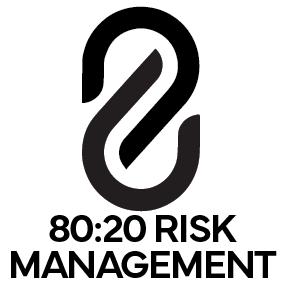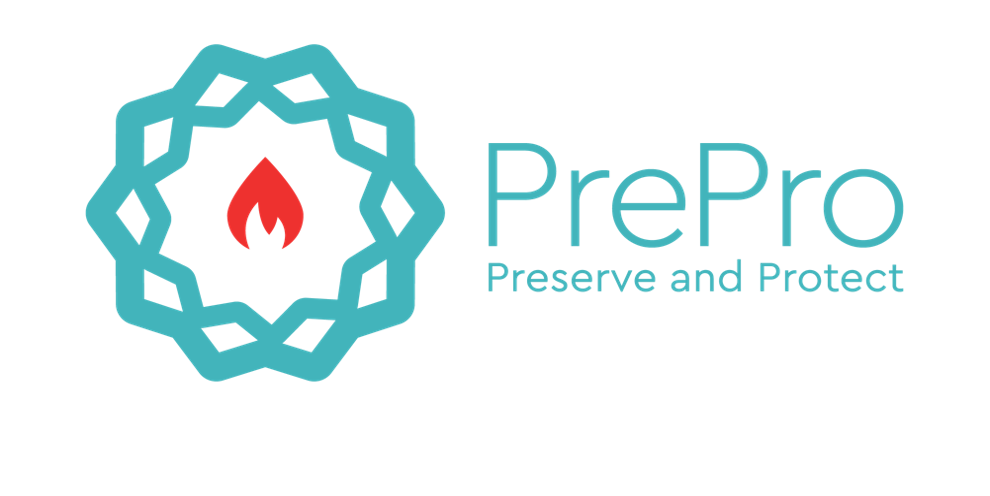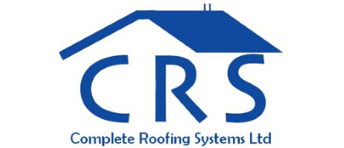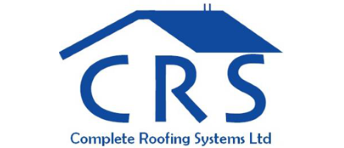Information
-
Document No.
-
Audit Title
-
Client / Site
-
Conducted on
-
Prepared by
-
Location
-
Personnel
-
Is confined space entry performed?
-
Are all employees who enter into a confined or enclosed space trained?
-
Have appropriate forms been completed? e.g. - Pre-Entry Checklist, Confined Space Permit, Air monitoring log, Entrant Log
-
Means of access / egress free from hazards?
Lockout / Tryout
-
Do work activities require the use of Lockout / Tryout procedures?
-
Are all employees trained in Lockout / Tryout procedures?
-
Are locks and tags appropriately used?
-
Are locks and tags, immediately identifiable, able to withstand the environment in which they are used, only used for LOTO, and standardized within the company?
-
Has zero energy been verified?
-
Are group lock boxes properly labeled and documented using the Lock Box Control List?
Excavation and Trenching
-
Is excavation work being performed?
-
Have all employees received Excavation and Trenching training?
-
Have all underground utilities been identified?
-
Have all excavations and trenches been protected as if in Type C soil regardless of actual classification unless written permission was obtained from McCarl's Safety Department?
-
Has adequate means of exit been provided for employees working in excavations over four feet deep? (Lateral travel to exit shall not exceed 25 feet)
-
Spoil piles stored or retained at least two feet from the edge of the excavation?
-
Has atmospheric testing been completed prior to entry in excavations four feet or greater in depth or less if there is a potential for a hazardous atmosphere?
-
Have barricades or other means been utilized to protect employees working in excavations from vehicular traffic?
-
Has the Daily Excavation Checklist been completed by the designated competent person?
Fall Protection
-
Are employees on walking/working surfaces with unprotected sides and edges which are six feet or more above a lower level?
-
Are employees protected by guardrails, safety nets or personal fall arrest sytems?
-
Have employees received training on the proper use and care of fall protection equipment?
-
Are all components of the personal fall arrest system inspected prior to use?
-
Is fall protection equipment free from defects that would require removal from service?
-
Are personal fall protection systems attached to appropriate anchor points?
-
Are retractable lanyards used when there is less than 18.5 feet of clearance from the anchorage point to obstructions below?
-
Are employees on walking / working surfaces protected from tripping in or stepping into holes of 2 inches or more?
-
Guard rail systems meet OSHA requirements? (i.e. - top rail 42" +or- 3", mid rail installed midway between top rail and working surface, able to withstand 200 lbs of force in any outward or downward direction, toe boards when required)
Flammable and Combustible Liquids
-
Are flammable and combustible liquids stored in approved containers?
-
Are flammable liquids stored away from areas used for exits, stairwells, or normally used aisle ways?
-
Are quantities of flammable liquids in excess of 25 gallons stored in an acceptable cabinet?
-
Are outdoor portable tanks stored at least 20 feet from any building?
-
Is at least one portable fire extinguisher provided for the flammable storage area?
-
Are flammable/combustible liquid containers properly closed when not in use?
-
Are "No Smoking" signs posted at fueling areas and flammable liquid storage areas?
-
Is bonding/grounding used when transferring liquids from one container to another?
Compressed Gases
-
Are all compressed gas cylinders in service or in storage secured to prevent falling or rolling?
-
Are cylinder storage areas posted with the hazard class or name of the gas?
-
Are acetylene and oxygen cylinders in storage separated by a minimum distance of 20 feet or by a noncombustible partition 5 feet high and having a fire resistance rating of at least 30 minutes?
-
Are acetylene storage areas posted with conspicuous signs forbidding smoking or open flames?
-
Are LPG cylinders stored stored to minimize exposure to excessive temperature, physical damage or tampering by unauthorized persons?
-
Does each compressed gas cylinder have valve protection caps in place when not in use?
-
Hand and Power Tools
-
Are all hand and power tools maintained in a safe condition?
-
Are supplied guards in place and properly adjusted?
-
Are electric power tools equipped with proper grounding or double insulated?
-
Are wooden handles free of splinters and cracks?
-
Are pneumatic power tools secured to the hose or whip by a positive means to prevent the tool from becoming accidentally disconnected?
-
Are fuel powered tools stopped while being refueled, serviced or maintained?
Angle Grinders
-
Have employees viewed the McCarl's Grinder Safety video?
-
Have employees reviewed the Angle Grinder Safety Policy?
-
Do all grinders have guards and handles in place?
-
Did employee receive permission from the Foreman to remove grinder handle?
-
Are clamps or other means used to secure the work piece?
-
Are grinders disconnected from the power source prior to making adjustments or wheel changes?
-
Does grinding wheel size and RPM rating match the grinder?
-
Is good body positioning being used to prevent kick back related events?
-
Is the work area free from combustible materials and trip hazards?
-
Is all required PPE being used while operating the grinder?
Barricades and Barriers
-
Is Danger tape used to indicate the presence of an immediate hazard which could cause death or serious injury?
-
Is Caution tape used to indicate the need for caution?
-
Are tags placed on all accessible sides of the safety tape indicating the responsible person's name, phone number, date and specific hazard?
-
Are barricades erected to prevent personnel from entering the swinging radius of a counter weighted super structure (i.e. crane)?
-
Are all barricades removed once the potential hazard in no longer present?
Personal Protective Equipment
-
Has the Foreman assessed the work area and made a determination of necessary PPE for the task?
-
Are all employees using eye protection that is in compliance with McCarl's Eye Protection Policy?
-
Are all employees wearing appropriate foot protection?
-
Are employees wearing appropriate hand protection based on the task they are performing?
-
Are all employees wearing a McCarl's issued hard hat with the bill forward?
-
Is hearing protection being used when necessary?
-
Is all PPE free from damage / defects and maintained in a sanitary condition?
First Aid and Medical Treatment
-
Is a facility for the treatment of injured employees reasonably accessible or is there an employee trained in first aid at the site?
-
Are first aid kits accessible with appropriate supplies?
-
Are first aid kits checked / inspected weekly?
-
Are there emergency eyewash and/or showers provided in the work area where employees may be exposed to corrosive materials?
Stairways and Ladders
-
Is a ladder or stairway provided at all personnel points of access where there is a break in elevation of 19 inches or more?
-
Is each stairway having four or more risers equipped with at least one stair rail system along each unprotected side?
-
Are the unprotected sides and edges of stairway landings provided with a guardrail system?
-
Are portable ladders maintained in good condition?
-
Are ladders stored in a location where the ladder does not create any additional hazard?
-
Are ladders marked with proper rating labels?
-
Are ladders inspected periodically and prior to each use?
-
Are ladders equipped with non-slip feet at the base?
-
Are ladders used properly? (do not stand on top, face ladder when using and climbing, use proper ladder for activity, ladder extends 36" above surface, ladder secured/tied off, proper 4:1 angle used, ladder is level, etc.)
Hazard Communication - GHS
-
Have all employees received McCarl's Hazard Communication/GHS training?
-
Has the Hazardous Substance Inventory Sheet been completed for the site (Appendix C)?
-
Does the worksite have copies of SDS/MSDS readily available to all employees?
-
Do all onsite employees know where to locate a SDS/MSDS?
-
Is each container of hazardous chemicals onsite properly labeled, tagged or marked in a way that provides at least general information regarding the chemical hazards?
-
Are secondary containers labeled with appropriate information?
Hearing Conservation
-
When noise levels a TWA of 90 dBA, are feasible administrative and engineering controls utilized prior to requiring hearing protection?
-
Are employees trained on when hearing protection is required and how to properly use, clean and maintain hearing protection equipment?
-
Is hearing protection being properly worn in required areas?
-
Is hearing protection equipment readily available to employees when required?
Material Handling and Storage
-
Are materials, which are stored in tiers, either stacked, racked, blocked, interlocked, or otherwise secured to prevent sliding, falling, or collapse?
-
Are aisle and passageways kept clear and in good repair to provide for the free and safe movement of material handling equipment?
-
Are waste materials disposed of properly?
-
Are storage areas kept free from the accumulation of materials that constitute hazards from tripping, fire or explosion?
-
Are maximum safe load limits of floors and shelving conspicuously posted for all storage areas?
Respiratory Protection
-
Are respirators or filtering face pieces used on site?
-
Is use of respirators or filtering face pieces voluntary?
-
When voluntary us of respirators or filtering face pieces are permitted, have the respirator users been provided with information / training contained in Appendix D of the McCarl's Respiratory Protection Program
-
Have employees been trained on the proper use of respirators, including donning and removing them, any limitations on their use and their maintenance?
-
Have employees received a medical evaluation to determine the ability to wear a respirator?
-
Are employees who wear tight fitting respirators clean shaven in the seal area?
-
Are employees who are required to wear a respirator fit tested annually for every type of tight fitting respirator they must use?
-
Are respirators that are used in routine situations inspected before each use and during the cleaning process?
-
Have end-of-service life schedules been determined for respirator chemical cartridges?
-
Are respirators being properly stored when not in use?
Machine Guarding
-
Are one or more methods of machine guarding provided to protect the operator and other employees in the area from hazards such as those created by point of operation, in-going nip points, rotating parts, flying chips and sparks?
-
Are fixed guards kept in place by either permanent means or in a manner to prevent inadvertent contact with the hazardous area?
-
Are fan blade guards no larger than 1/2" when the blades of a fan are less than 7 feet above the floor or working level?
-
Are machines designed for a fixed location securely anchored to prevent walking or moving?
-
Are guards made of durable material that will withstand the conditions of normal use?
-
Do safeguards allow for safe lubrication of the equipment?
-
Are pedestal grinder tool rests adjusted closely to the wheel with a maximum opening of 1/8"?
-
Are pedestal grinder tongue guards maintained so that the distance between the wheel and adjustable tongue does not exceed 1/4"?
-
Are abrasive wheel safety guards provided covering the spindle ends, nuts and flange projections?
-
Are interlocking movable guards designed so that the hazardous machine functions protected by the guard cannot operate until the guard is closed?
Powered Industrial Trucks
-
Are powered industrial trucks used on site?
-
Are all powered industrial trucks labeled or identified with a mark indicating approval by the testing laboratory?
-
Are all nameplates and markings in place and maintained in a legible condition?
-
When a PIT is left unattended are load engaging means full lowered, controls neutralized, power shut off and brake set?
-
Are PITs inspected at least daily and where used on a round-the-clock basis, inspected prior to each shift?
-
Are PITs free of damage/defects that would make the unit unsafe to operate?
-
Have you verified the operator's certification and made a copy to place in the employee file?
-
When PITs are used indoors have carbon monoxide levels been monitored and found to be at acceptable levels?
-
Are all PITs operated in a safe manner?
-
Rigging
-
Is rigging equipment inspected prior to each use?
-
Is defective rigging equipment removed from service or have a defective tag applied?
-
Are all employees who perform rigging activities qualified to do so?
-
Do all slings have a legible tag indicating capacity and manufacture's information?
-
Are slings stored in an area as to not subject them to damage?
-
Are all suspended loads attended?
-
Are chain slings and chain hoists inspected annually, and are the inspections documented?
-
Do all lifting beams and spreader bars have capacity labels, and are the labels legible?
-
Are tag lines installed and being utilized while an object is being picked?
-
Is there clear communication being used between the equipment operator and the rigging crew?
Scaffolds
-
Are scaffolds being utilized on site?
-
Are all scaffolds designed by a qualified person and constructed and loaded in accordance with that design?
-
Is each platform of all working levels fully planked and decked with space not more than one inch wide between platform sections?
-
Is each platform walkway at least 18" wide?
-
Are the front edge of platforms not more than 14" from the face of the work, unless protected by a fall protection system?
-
Are supported scaffolds with a height to base width ratio of more than 4:1 restrained from tipping by guying, tying, bracing or equivalent means?
-
Do support scaffold poles, legs, posts, frames and uprights bear on base plates and mud sills or other adequate firm foundation?
-
Is a safe means of access provided on scaffold platforms that are more than 2 feet above or below a point of access?
-
Are stairway access and ramps/walkways greater than 4 feet in height equipped with a guardrail system?
-
Do guardrails for the working surface of the scaffold have a top real, mid-rail and toe board?
-
Are alternate fall protection measures provided when scaffold systems do not meet the requirements and during the construction where guardrails are not present?
-
Are scaffolds erected, used, dismantled, altered or moved so that any conductive material or unqualified electrical worker are no closer to exposed energized lines than the following specifications (assume all lines are un-insulated): < 50 kV – 10 feet / > 50 kV – 10 feet + 0.4 inches for each 1kV over 50 kV?
-
Are areas below the Scaffold to which objects can fall barricaded or has a toe board been erected along the edge of the working platform to prevent accidental bumping of material off the platform?
-
Are scaffolds and scaffold components inspected by a competent person following initial construction?
-
Are scaffolds, that are actively in use, inspected for visible defects before each work shift and documented on the inspection tags hung at every access point?
Cranes
-
Do crane operators have the required certifications to operate assigned equipment?
-
Are riggers and signal persons trained to meet the responsibilities they are assigned?
-
Do employees know when a signal person is required?
-
Is the pre-shift crane inspection report being completed?
-
Are the annual crane and wire rope inspections being completed?
-
Do Crane operators know what to do if they identify a portion of the crane, that is safety related, to be deficient during any of their inspections?
-
Have all overhead electrical lines been identified and preventative measures established to avoid contact?
-
Has a spotter been assigned and are the knowledgeable of the safe work distance near electrical hazards?
Vehicle Safety
-
Has a Driver's License Check been completed for all employees operating company vehicles?
-
Are parking brakes set and vehicles turned off when parking and/or exiting the vehicle?
-
Are all vehicles equipped with an audible warning device (horn), headlights, taillights and brake lights, and are they functioning properly?
-
Do all vehicles have seat belts and are they used?
-
Are all vehicles inspected at the beginning of each shift to assure that all parts, equipment, and accessories affecting safe operations are free of defects?
-
Is "First Move Forward" being utilized when parking vehicles?
-
Health & Safety Training
-
Have all employees received the McCarl's Safety Orientation prior to starting work on the site?
-
Are employees receiving annual refresher training when required?
-
Have employees received specialized training when required (e.g. - Confined space, respirator, etc)?
-
Is the McCarl's Safety Training Matrix being utilized and kept current?
Hot Work
-
Has a "Hot Work Permit" system been implemented and followed by employees?
-
Are compressed gas cylinders, utilized in hot work operations, stored and used properly?
-
Are employees instructed on the safe use of fuel gas and the safe means or arc welding and cutting?
-
Are frames of arc welding and cutting machines grounded?
-
Are torches for arc welding and cutting inspected for leaks at the beginning of each shift?
-
Are oxygen cylinders and fittings kept away from oil and grease?
-
Are welding and cutting operations shielded by noncombustible or flameproof screens, whenever practicable?
-
Is suitable fire extinguishing equipment immediately available in the work area?
-
Are employees who perform hot work provided with and wear suitable eye protection?
-
When normal fire prevention precautions are not sufficient, are additional personnel (i.e. fire watch) assigned to guard against fire while hot work is performed and for a sufficient period of time after completion of the work?
Electrical Safety
-
Are only listed and labeled equipment used in electrical installations? (specifically inspect for shop-made extension cords utilizing a junction box with knock-outs
-
Are unused openings in electrical boxes , cabinets, or housings effectively closed to afford protection equivalent to the wall of the equipment? (i.e. missing knock-out or circuit breaker openings)
-
Is electrical equipment firmly secured to the surface on which it is mounted?
-
Is each disconnecting means for motors and appliances legibly marked to indicate its purpose, unless arranged so that the purpose is evident? (i.e. disconnect switch for a welder, gantry crane)
-
Is a minimum sufficient space of 30 inches provided and maintained about all electrical equipment to permit ready and safe operation? (width of equipment or 30 inches for 600 Volts or less; 36 inches for >600 Volts)
-
Are permanent and conspicuous warning signs (DANGER - HIGH VOLTAGE - KEEP OUT) provided at entrances to all buildings, rooms, or enclosures containing exposed live parts of 600 Volts or more?
-
Are flexible cords and cables only used as permitted? (not used as a substitute for fixed wiring; run through wall, ceilings, or floors; run through windows, doors, or other openings; attached to building surfaces; concealed behind walls, ceilings, or floors)
-
Are flexible cords (extension cords, portable power tool / appliance cords) maintained in good condition with no evidence of damage that might expose persons to injury? (look for loose parts, deformed and missing pins, or damage to the outer insulation)
-
Is electrical PPE and equipment (insulated tools, mats) maintained in good condition and within the test dates?
-
Are GFCIs or an Assured Equipment Grounding Conductor Program utilized on all sites?
-
Are cabinets, fittings, and electrical boxes in damp or wet locations installed to prevent moisture or water from entering the enclosure?














